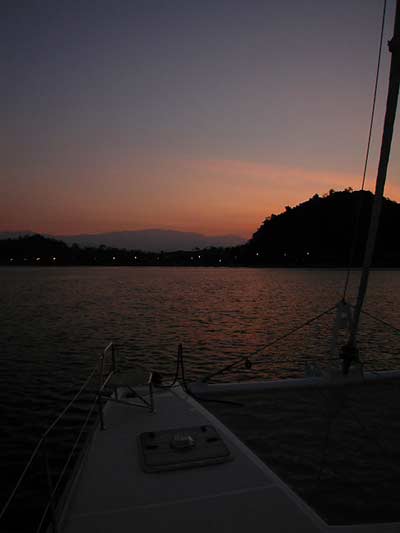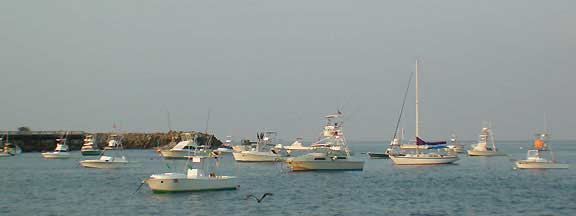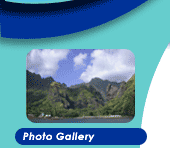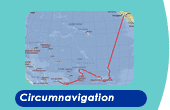March
20, 2001
Quepos,
Costa Rica
A Morning in Quepos
By Lois Joy  
I awake to the predawn glow, the sky a pale red against the mountain
ridge, the lights of Quepos still glimmering against the sandy shore.
The wind had shifted 180 degrees during the night, as it often does
here, the afternoon land breeze changing to a sea breeze as the land
cools. The fifty-plus fishing vessels moored here had all changed
direction like marching soldiers. Yesterday afternoon, when we
anchored here, they all faced the sea. And Pacific Bliss took up
the rear. This morning, they are lined up in formation facing the
shore, with Pacific Bliss in the lead.

Quepas at pre-dawn.

The sportsfishing fleet in the early
morning.
At 6:30, as the sun breaks bright over the mountains, the action begins.
A steady caravan of sports fishing boats proceeds to the dock, where
groups of men in an assortment of white tee shirts wait in anticipation.
Gunter and I sip our coffee in the cockpit of Pacific Bliss, watching
the busy scene. We are relieved that this morning, we will just
take it easy and then find out what there is to see in Quepos.
Sportfishing is big in the Quepos area; in fact, the locals claim that
it is one of the top ten best areas in the world. Sailfish are
the big prize, but yellowfin tuna, marlin, dorado, wahoo, and amberjack
are also caught here. Depending on the size of the vessel,
equipment on board, and the experience of the skipper, a day’s trip
can cost from $300 to $1000 U.S. Offshore fishing is best here
from December until April, so we are right in the season. There
are only two sailboats in the anchorage. We met the captain of
one of them at the dinghy dock, before we checked in with the Port Captain
yesterday. He charters here. We observed the second sailboat,
a nice ketch, bringing about 20 passengers, all in bright orange preservers
back from a three-hour sunset cruise, motoring, of course. Not
a bad business at $55 or so a head for three hours!
The town of Quepos gets its name from the Quepos Indian tribe, who
inhabited the area at the time of the conquest. By the end of
the 19th century, that population had disappeared, due to diseases brought
by the Europeans, internecine warfare with other Indian tribes, and
slavery. Farmers from the highlands then colonized this area.
As with many ports here, bananas became the primary export. When
the banana production declined because of disease, African palm oil
became the next exported product. Now, sportfishing and
tourism provide the bulk of the business for Quepos.
|











